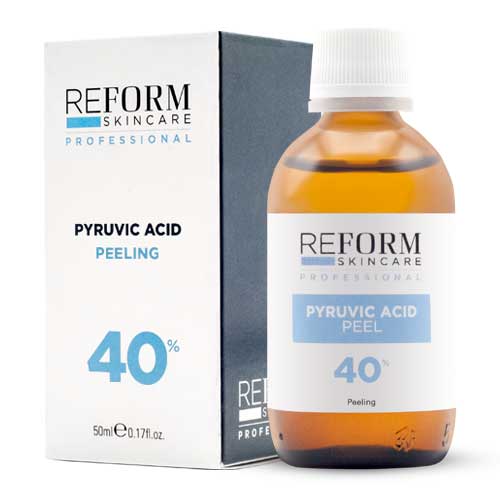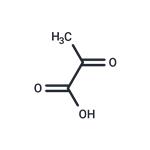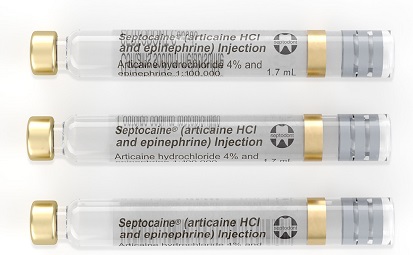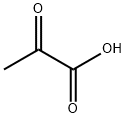The use of pyruvic acid in the treatment of skin disease
Nov 13,2023
Background
Pyruvic acid (CH3-CO-COOH), an α-keto-acid, can be used as a component in culture broths and media as commercial red seaweed polysaccharide. It is involved in the construction of amino acid alanine as well as supplies energy to living cells via citric acid cycle (Krebs cycle). It reacts with N-acetyl mannosamine by an aldol-type condensation to prepare sialic acid. It is employed to study the cultivation of soil bacteria as micro colonies using soil substrate membrane system.
It has been recently used as a medium chemical peeling agent in subjects with inflammatory acne, moderate acne scars, greasy skin, actinic keratosis, and warts.

Acne
Acne is one of the most common dermatological diseases, affecting about 50% of adolescents.
In order to evaluate the efficacy and tolerability of pyruvic acid chemical peeling in the treatment of mild to moderate papulopustular acne. C Cotellessa et al.[1] conducted an open-label study in which patients with mild to moderate papulo-pustular acne were treated with 40-50% pyruvate every 2 weeks for a total of 3-4 months. Forty patients (26 women and 14 men), ranging in age from 18 to 30 years, were enrolled in the study. Sebum production and skin hydration were evaluated in 24 patients before and after treatment.
Post-treatment evaluation of sebum production in 24 patients showed a reduction in sebum levels in all patients. There was no significant difference in skin hydration value after treatment compared to before treatment. And no side-effects were observed during or after treatment.
Karolina Chilicka et al.[2] explored the differences in the effectiveness of azelaic and pyruvic acid peels in the treatment of acne vulgaris. The clinical evaluation of the patients showed significant reduction of severe acne symptoms in both the azelaic acid and pyruvic acid groups after the peel treatment. Results were also found in reducing desquamation and oiliness skin. Pyruvic acid significantly reduced skin greasiness than azelaic acid.
Melasma
Melasma, a facial melanosis, is a common skin problem among middle-aged women of all races, especially those with darker skin. Its exact pathogenesis is unclear and may be due to a variety of causes such as genetic influences, exposure to sunlight, pregnancy, oral contraceptives, estrogen-progesterone therapy, thyroid dysfunction, cosmetics and medications.[3]
Zeinab Tosson et al.[4] conducted on15 patients with melasma (14 females,1 male). They were subjected to chemical peeling with pyruvic acid 40-50%. There was a significant correlation between the degree of improvement and type of melasma. Patients with epidermal type of melasma showed significantly better response to treatment than other types.
Photoaging
Photoaging is a term used for the characteristic changes to skin induced by chronic UVA and UVB exposure. To evaluate the efficacy and tolerability of 50% pyruvic acid on moderately photodamaged facial skin, Ilaria Ghersetich et al.[5] treated 20 patients with four peeling sessions at 4-week intervals. Clinical evaluation of patients after peeling showed smoother skin texture, fewer fine wrinkles, and significantly reduced pigmentation (freckles and lentigines). In fact, chemical peels can cause the epidermis to thin and the dermis to thicken. Patients who received treatment reported very limited or no discomfort in the post-stripping period.
References
1 The use of pyruvic acid in the treatment of acne. doi:10.1111/j.1468-3083.2004.00759.x
2 A comparison of the effectiveness of azelaic and pyruvic acid peels in the treatment of female adult acne: a randomized controlled trial. doi:10.1038/s41598-020-69530-w
3 Melasma: Treatment strategy. doi:10.3109/14764172.2011.630088
4 Pyruvic acid as a new therapeutic peeling agent in acne, melasma and warts. Egyptian Dermatology Online Journal 2 (2): 7,December 2006.
5 Pyruvic Acid Peels for the Treatment of Photoaging. doi:10.1111/j.1524-4725.2004.30002.x
- Related articles
- Related Qustion
- Different preparation methods of pyruvic acid Apr 20, 2022
Pyruvic acid, also known as a-oxopropionic acid, is an organic compound with a chemical formula of C3H4O3 and a structure of CH3COCOOH.
Articaine (Septocaine) 1:100,000 epinephrine was approved for use in the United States in 2000.....
Nov 13,2023APIAmmonia is directly or indirectly the precursor to most nitrogen-containing compounds. Determining the Lewis structure for the NH3 is essential.....
Nov 13,2023Inorganic chemistryPyruvic acid
127-17-3You may like
- Pyruvic acid
-

- $0.00 / 1kg
- 2025-12-19
- CAS:127-17-3
- Min. Order: 1kg
- Purity: 98%
- Supply Ability: 20MT
- Pyruvic acid
-

- $41.00 / 500mg
- 2025-12-19
- CAS:127-17-3
- Min. Order:
- Purity: 95.31%
- Supply Ability: 10g
- Pyruvic acid
-

- $1000.00/ ton
- 2025-12-16
- CAS:127-17-3
- Min. Order: 1ton
- Purity: 99%
- Supply Ability: 5000






